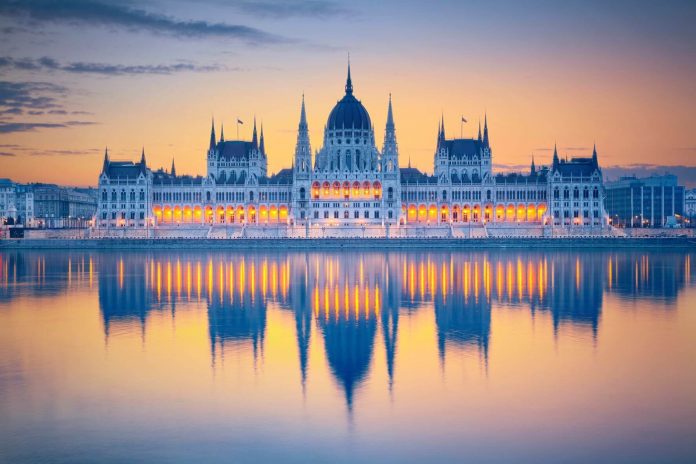
Contents
Last Updated on 25th April 2022
Budapest’s beauty is obvious, so prepare to be charmed by creaking yellow trams, wide avenues, expansive public spaces, a riot of architectural styles and sprawling palaces. The city still has remains of long-gone empires, and a mix of old-world charm, ruinous bars and sweeping city views. With all of this in mind, Budapest can be considered one of the most Instagrammable cities in all of Europe.
The city is divided into two parts: Buda on one side and Pest on the other, which are split by the Danube. Historically, they were a crossroads of the Eastern and Western worlds during the Roman Empire. In addition to Romans, there were Celts, Mongols and Ottoman Turks over the years. One way or another, they all left their mark on the beautiful city we now know as Budapest.
The city truly came into its own in the mid-19th century when it was fuelled by untold wealth, power and ambition. As a result, Budapest became known as one of the world’s greatest cities both intellectually and architecturally.
Most of what is seen in Budapest today are remnants from this opulent period in the city’s history, with its iconic bridges, faux fairy-tale castles and ornate mansions. This all makes the city one of Europe’s most photogenic and Instagram worthy destinations.
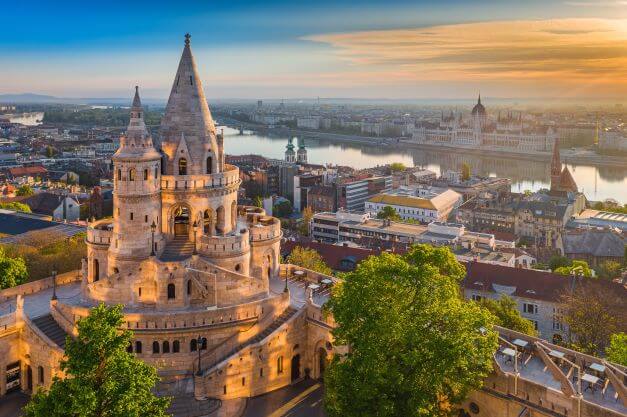
Fisherman’s Bastion
Address: Budapest, Szentháromság tér, 1014 Hungary
One of the most stunning places in Budapest is definitely the fairy tale-looking Fisherman’s Bastion. Located on the Buda side of the city, Fisherman’s Bastion is a panoramic lookout tower. It’s one of the most breathtaking buildings in the city.
Fisherman’s Bastion sits on the site of Buda’s former defensive walls and fish market. The ramparts were guarded by fishermen who ran the nearby fish market in the Middle Ages- hence the site’s name.
Constructed between 1895 and 1902, the Bastian is purely an aesthetic addition to Castle Hill. The seven Magyar leaders and tribes are represented by the magnificent seven white stone towers. In fact, these leaders and tribes conquered and settled down here in 896- which led to modern-day Hungary being founded.
The entire site is a photographer’s delight with ample opportunities for great photos, all while admiring the stunning views across the Danube into Pest.
Cost:
Fisherman’s Bastion is mostly free, but you have to pay a small entrance fee to visit the upper towers (1000 HUF). However, entrance is free until 9 AM and during the Winter period (between 16 October and 15 March) and on 20 August (Hungarian national holiday).
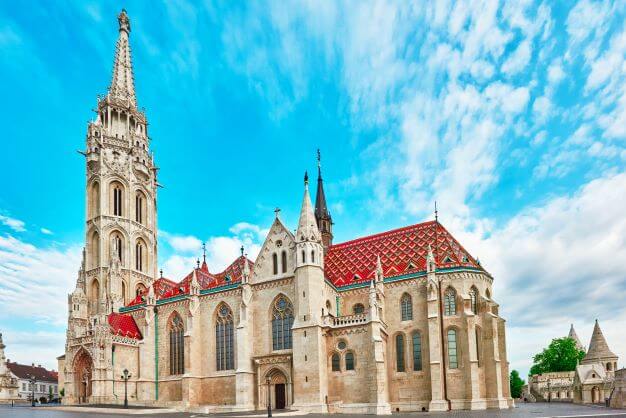
Matthias Church
Address: Budapest, Szentháromság tér 2, 1014 Hungary
It’s easy to visit both Fisherman’s Bastion and Matthias Church at once as the church is practically part of the Bastion. The church was used by Hungarian kings for centuries as a coronation church and it’s still one of the most unique churches in Europe today.
In the late 1300s part of this gothic-style cathedral was built, making it one of Budapest’s oldest buildings. While the exterior is stunning in itself with a colorful tiled roof, the church is still equally as beautiful on the inside with ornate details and high vaulted ceilings throughout.
Cost:
It’s free to visit the Matthias Church from the outside. However, if you want to go inside it costs 1800 HUF per person.
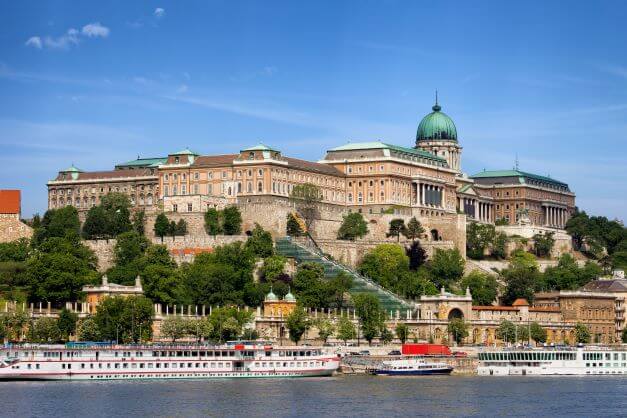
Buda Castle
Address: Budapest, Szent György tér 2, 1014 Hungary
In 1987, Buda Castle was declared a UNESCO World Heritage Site. Today, the former royal palace houses the Budapest History Museum and the Hungarian National Gallery.
The grounds are open 24/7, but Buda Castle’s hours are the same as the museum and gallery- which are open from Tuesday through to Sunday from 10 AM till 6 PM.
The construction of the awe-inspiring Buda Castle began all the way back in 1265. The Neo-Baroque style palace, which was added after the rebuilding of the Buda Castle, only finished being built in 1769.
Buda Castle can be considered as one of Hungary’s most important historical buildings, and as one of Europe’s most beautiful castles.
Cost:
It’s free to take a stroll around Buda Castle. If you want to visit the museums additionally, an adult ticket to the Hungarian National Gallery costs 3200 HUF and a ticket to the Budapest History Museum costs 2400 HUF.
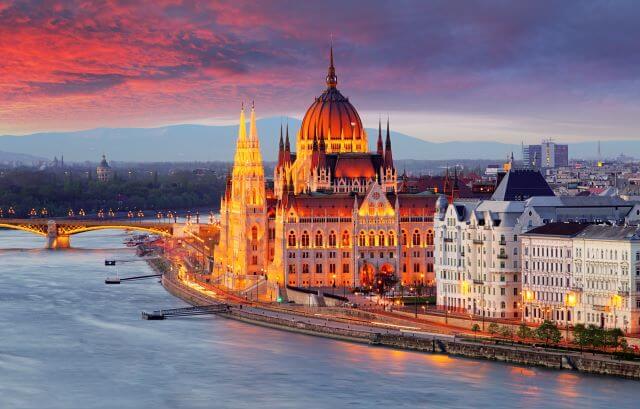
Hungarian Parliament
Address: Budapest, Kossuth Lajos tér 1-3, 1055 Hungary
The largest building in Hungary is currently the Hungarian Parliament. It has a height of 315 feet (96 meters), and it’s also the world’s third largest parliament building.
In fact, the Hungarian Parliament is one of the finest Gothic and Renaissance Revival architecture in the world. The site is situated on the UNESCO-listed banks of the Danube river.
It took 17 years to complete the 691-room building, which was finished in 1902. It’s one of the most popular landmarks in the city, attracting nearly 700,000 visitors each year.
The best viewpoint of the Hungarian Parliament is on the Buda side of the river, which faces the Parliament building directly.
Cost:
The Hungarian Parliament viewpoint is entirely free to visit.
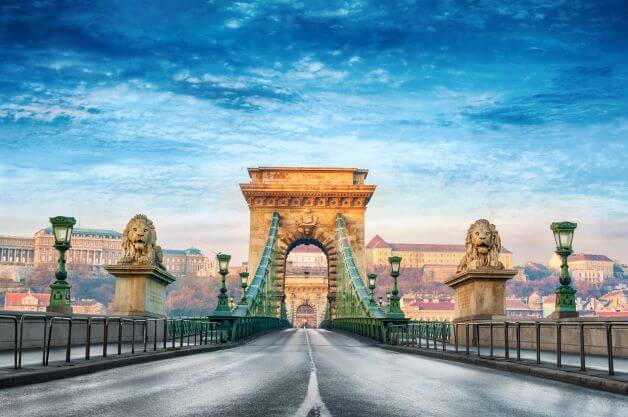
Széchenyi Chain Bridge
Address: Budapest, Széchenyi Lánchíd, 1051 Hungary
The Széchenyi Chain Bridge is 1,230 feet (375 meters) long, and was the first bridge to be built on the Danube river in Budapest and was designed by Englishman William Tierney Clark. The bridge has two giant lions guarding both of the bridgeheads, and Széchenyi Chain Bridge is definitely the most famous bridge in Budapest.
Not only is Széchenyi Chain Bridge beautiful, it also offers amazing views over the sides of Buda and Pest.
One of the best things to do in Budapest is walking over the Chain Bridge. However, at the moment it’s not possible as the bridge is currently under renovation and it’s closed to both pedestrian and car traffic.
Cost:
It’s free to visit the Széchenyi Chain Bridge.
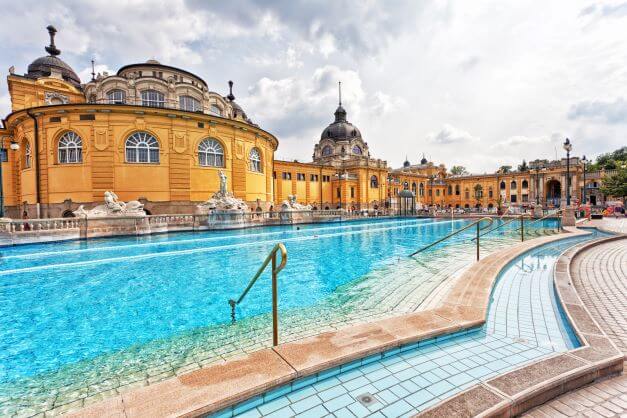
Széchenyi Thermal Bath
Address: Budapest, Állatkerti krt. 9-11, 1146 Hungary
One of the most Instagrammable places and the most famous bath in Budapest is the Széchenyi Thermal Bath. Who would say no to relaxing in a thermal bath while taking amazing photos? Yes, please!
The Széchenyi Thermal Bath has an iconic yellow building with different kinds of pools both inside and outside. The bath’s most photogenic parts are definitely the outside pools: there are three, consisting of two thermal water pools on each side and one big swimming pool in the middle.
Cost:
Tickets can be purchased online from their website in advance. The tickets usually cost between 5,600 to 6,800 HUF.
Heroes Square
Address: Budapest, Hősök tere, 1146 Hungary
The largest and most important square in all of Budapest is Heroes Square (Hosök Tere). In the middle, a statue of Archangel Gabriel is featured surrounded by statues of important Hungarian national leaders and the seven chieftains of the Magyar Tribes on both sides of the monument.
Archangel Gabriel is seen holding St. István’s crown and the apostolic cross. This represents the country’s conversion to Christianity.
Heroes Square was built to commemorate the 1000-year-old history of Hungary in 1896. The monument was finally completed in 1929.
The statues that are found atop the monument’s colonnades symbolize War, Peace, Work, Welfare, Knowledge and Glory.
Cost:
Visiting Heroes Square is completely free!
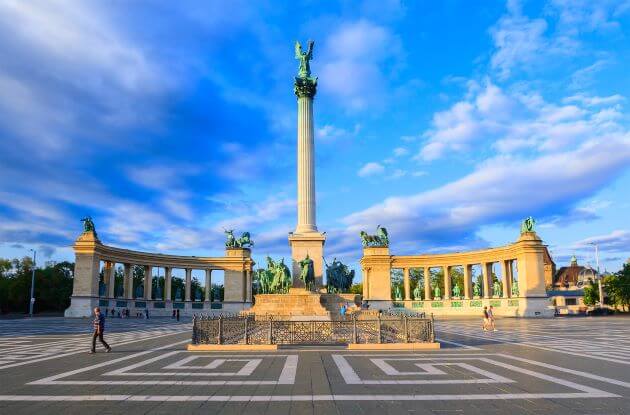
Andrássy Avenue
Address: Budapest, Andrassy ut, 1061 Hungary
The Hungarian equivalent of France’s Champs-Élysées is Andrássy Avenue (Andrássy út). The avenue is the longest and grandest boulevard in all of Budapest. It cuts through central Pest for two and a half kilometers, connecting Erzsébet Square and the City Park.
One of the city’s primary dining and shopping destinations is Andrássy Avenue, which features a bevy of fine restaurants, cafés, and luxury boutiques.
The avenue was inaugurated in the late 19th century. Initially, it was called the Radial Boulevard but was renamed soon after. Andrássy Avenue got its name after the statesman and former prime minister Count Gyula Andrássy.
Interestingly, the avenue has been known by other names as well: Stalin Avenue (1949 till 1956) and the Avenue of the People’s Republic (1957 till 1989).
Cost:
Strolling along Andrássy Avenue is free.
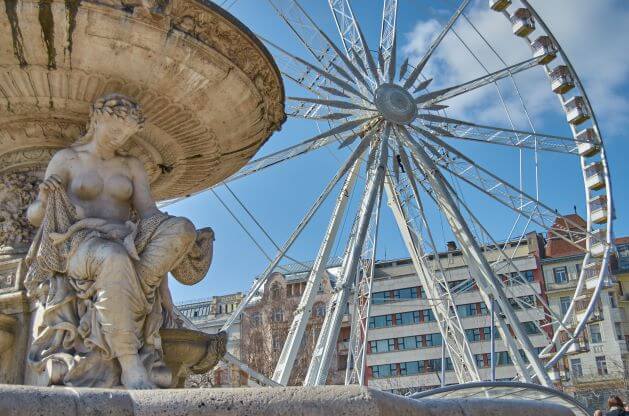
Budapest Eye and Danubius Fountain
Address: Budapest, Erzsébet tér 4, 1051 Hungary
We can all agree that the Budapest Eye makes for a really cool backdrop. What makes it even cooler is when you’re up close to the Ferris wheel. You will find a beautiful fountain right in front of the Budapest Eye, called the Danubius Fountain- so it’s easy to take photos with both at the same time.
Cost:
Getting up close to the Budapest Eye and Danubius Fountain is free. If you want to ride the Ferris wheel you would need to buy a ticket for 3,000 HUF.
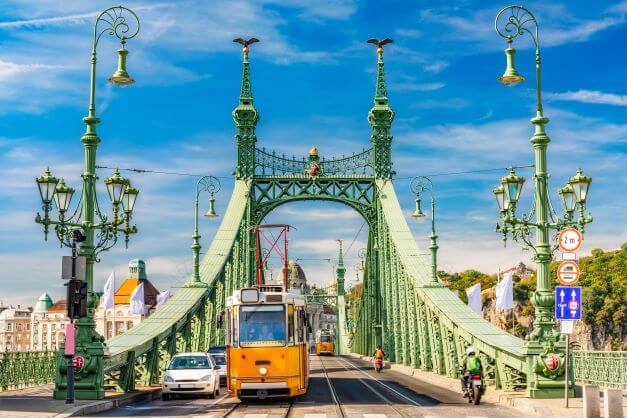
Liberty Bridge
Address: Budapest, 1111 Hungary
It’s really worth visiting Budapest’s other bridges, even though Széchenyi Chain Bridge is the most popular bridge in the city.
The Liberty Bridge is unique and beautiful with its vibrant green color with plenty of photo opportunities on the bridge itself.
The best viewpoint over the bridge is found at the entrance of the Gellért Hill Cave. If you’re visiting Budapest during spring, it’s even better- in front of the cave, you can catch the almond tree in full bloom.
Cost:
It’s totally free to visit the Liberty Bridge.
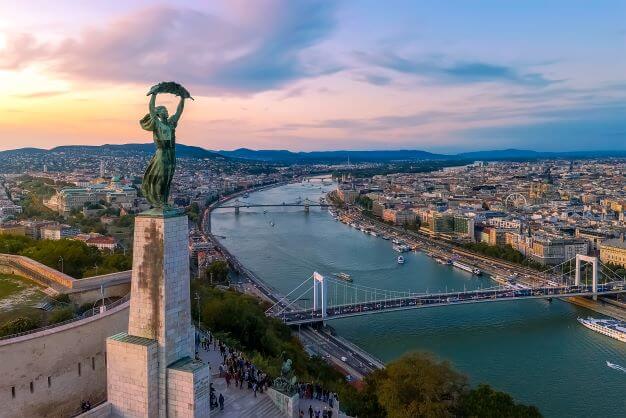
Gellért Hill and Citadella
Address: Budapest, 1118 Hungary
There’s no better viewpoint over Budapest than that from the Citadella, at the top of Gellért Hill. In fact, there’s even a saying about it- “if you can look down, you’re in Buda but if you can look up at something, you’re in Pest”.
The Panaramic view that the 460 feet (140 meter) high dolomite rock has to offer is rewarding to those willing to climb to the top. Prepare to be amazed by views over the whole of Pest, including Margaret Island, the Hungarian Parliament, St. Stephen’s Basilica and the Chain Bridge.
Cost:
It’s free to visit the viewpoint from the Citadella, at the top of Gellért Hill.

































